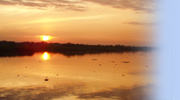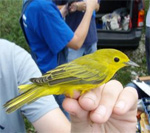RESEARCH
Ecology of infectious disease in people, primates, and domestic animals
People, wildlife, and domestic animals around the world are intereacting in new ways as environments change around them. For over 16 years, The Kibale EcoHealth Project has studied the non-human primates, people, and domestic animals of Kibale National Park, Uganda, as a case study of this phenomenon. Kibale is a protected tropical forest known for its exceptional diversity of primates. We focus on "interface" habitats in and near the national park, where human-wildlife conflict and contact occur in a region that is a hot spot for disease
emergence. We study how environmental changes alter cross-species disease transmission and how these alterations impact human and animal health. We train international students and work with governmental organizations and NGOs to translate our scientific results into effective‚ targeted policy.
Currently, we are working with the Kibale Chimpanzee Project to understand how aging and infection interact in wild chimpanzees. This research endeavors to understand senescence and life history tradeoffs in a comparative framework. At the same time, we are working with the Kibale Forest Schools Programme and the Kasiisi Project to understand how chimpanzees are conracting viruses that commonly circulte in children in nearby communities. This project, "Healthy Children, Healthy Apes," is currently expanding to different sites in Uganda and across Afric.
Diseases of conservation
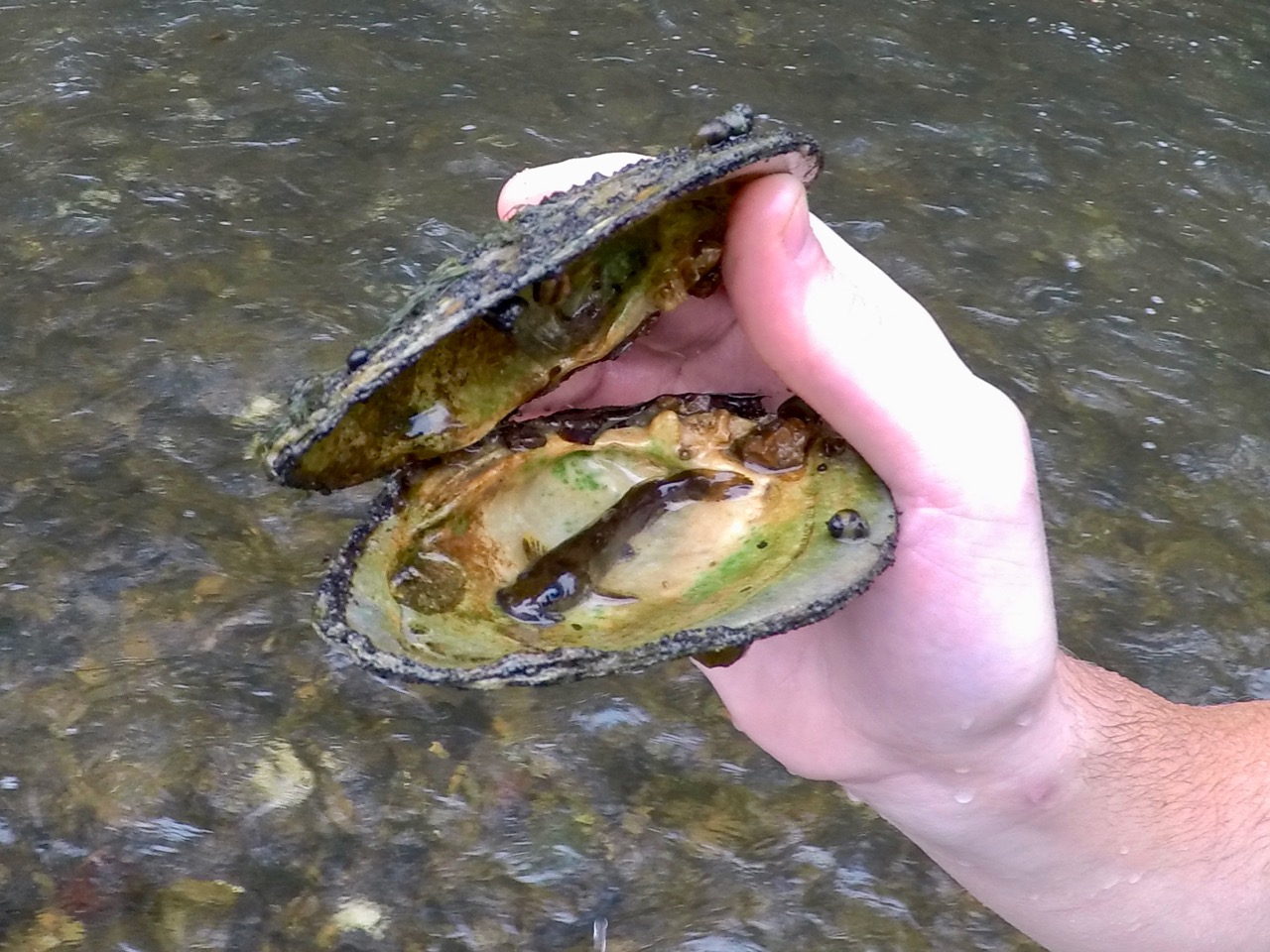
- Freshwater mussels (family Unionida) are among the most beautiful, biodiverse, and underappreciated animal taxa. They are also critical providers of ecosystem services such as water purification, substrate stabilization, and food and habitat provision for other wildlife. Unfortunately, freshwater mussel populatipons around the world are suffering catastrphic mass mortality events. We are collaborating with the US Fish and Wildllife Service, the US Geological Survey, the USGS National Wildlife Health Center, and others to understand the proximate and ultimate causes of mussel die-offs around the world.
- Freshwater fish Viruses threaten the health and sustainability of North America's fisheries. We are using epidemiological and diagnostic tools to manage the emergence and spread of viral hemorrhagic septicemia virus, a deadly emerging pathogen, in the Upper Midwest. We are also mapping the distribution of unknown viruses in sport fish populations across Wisconsin, to help conservation and management efforts. These projects are collaborations between UW-Madison, the Wisconsin Department of Natural Resources, and the University of Wisconsin Sea Grant Institute.
- Coral Reefs are declining around the world due to climate change, ocean acidification, and disease. In Florida and the Caribbean, stony coral tissue loss disease (SCTLD) has decimated coral reefs since 2014. We are collaborating with the Cayman Islands Department of Environment and others to understand what is causing SCTLD and how to stop its spread.
- Bonefish (Albula spp) are a coveted near-shore marine sport fish that depend on delicate mangrove ecosystems. Healthy bonefish populations can support local economies and can justify conserving coastal habitats. Unfortunately, bonefish populatipons are in decline, especially in the Florida Keys. We are collaborating with the Bonefish & Tarpon Trust, the Fisheries Conservation Foundation, and others to understand the health-related causes of bonefish declines.
- Polar bears (Ursus maritimus) Perhaps no other species is as iconic a symbol of climate change than the polar bears. In collaboration with the USGS Alaska Science Center, we are studying how Arctic climate change has affected polar bear health over the last 40 years. We are examining how factors such as longer summers and sea ice retreat might be causing physiological stress in polar bears, leading to increased disease susceptibility.
- Other projects We can't say no to interesting collaborations and "one-off" projects. These include helping to identify parasitic causes of disease in threatened amphibians and reptiles, identifying viruses in endangered mammals, researching causes of lethal disease in bald eagles, "hunting" for viruses in weird ectoparasites, and collaborating on computational approaches to predict virus spillover. Other intriguing epidemiological and clinical challenges come our way on a regular basis, sometimes ending there and sometimes leading to unexpected discoveries and sustained research. Bring it on!
Discovering novel pathogens
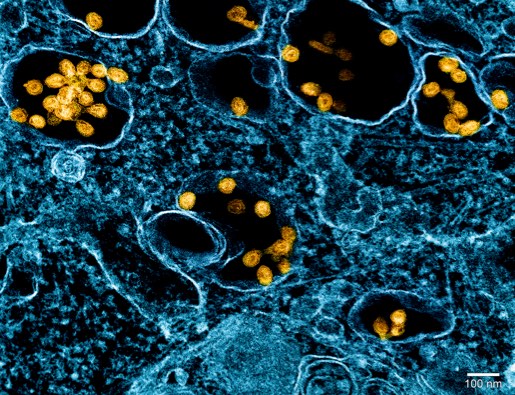 Only a fraction of the world's pathogens are known. We use metagenomics and other methods to "hunt" for viruses, bacteria, eukaryotic parasites, and other disease-causing agents. We study both emerging diseases that pose a threat to animals and people today and "pre-emergent" microbes that may be lurking in animal reservoirs Our studies to date have revealed divergent simian hemorrhagic fever viruses in wild monkeys, unknown tapeworms in captive apes, viruses of bald eagles across the USA, just to name a few. Our goal is to understand how pathogens in nature interact with their hosts and with each other and what conditions favor their emergence.
Only a fraction of the world's pathogens are known. We use metagenomics and other methods to "hunt" for viruses, bacteria, eukaryotic parasites, and other disease-causing agents. We study both emerging diseases that pose a threat to animals and people today and "pre-emergent" microbes that may be lurking in animal reservoirs Our studies to date have revealed divergent simian hemorrhagic fever viruses in wild monkeys, unknown tapeworms in captive apes, viruses of bald eagles across the USA, just to name a few. Our goal is to understand how pathogens in nature interact with their hosts and with each other and what conditions favor their emergence.
Discovering novel transmission pathways
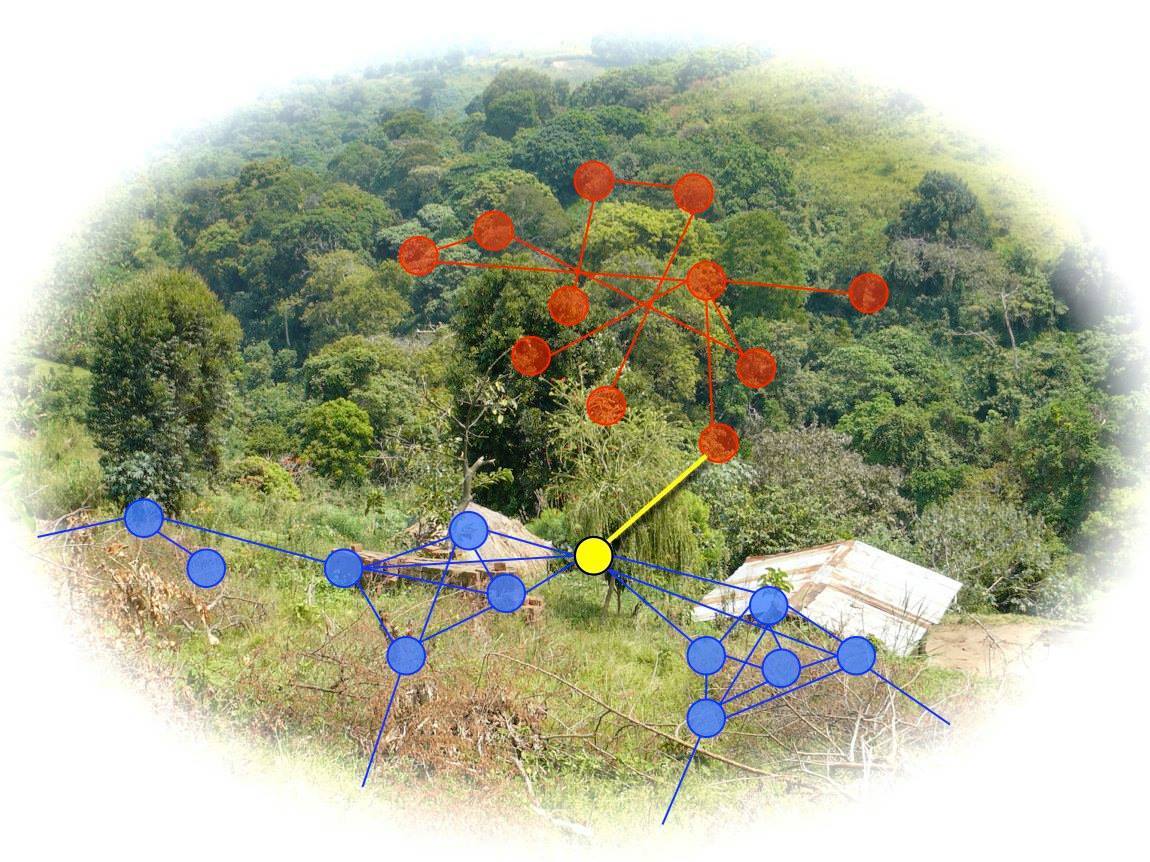 Even if the world's pathogens were completely cataloged, this information would not be sufficient to inform public health. We use approaches from the social sciences that we have dubbed "pathway discovery." Pathways are the routes that microbes traverse as they travel from their natural reservoirs to new hosts and new environments. To discover and characterize transmission pathways, and ultimately to disrupt them, we use methods from the social sciences, including quantitative approaches such as social network analysis and qualitative approaches such as ethnography. By mixing methods, we hope to understand the myriad pathways that microbes might traverse – whether those microbes are known, novel, or not yet evolved.
Even if the world's pathogens were completely cataloged, this information would not be sufficient to inform public health. We use approaches from the social sciences that we have dubbed "pathway discovery." Pathways are the routes that microbes traverse as they travel from their natural reservoirs to new hosts and new environments. To discover and characterize transmission pathways, and ultimately to disrupt them, we use methods from the social sciences, including quantitative approaches such as social network analysis and qualitative approaches such as ethnography. By mixing methods, we hope to understand the myriad pathways that microbes might traverse – whether those microbes are known, novel, or not yet evolved.
Disease and society
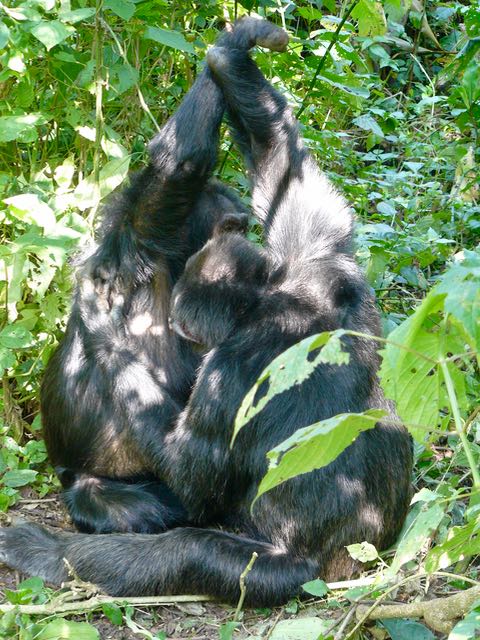
Disease has played a major, but under-appreciated, role in shaping our species. We study animal populations and their infectious diseases as model systems for human biological and societal evolution. For example, we study wild chimpanzees as evolutionary models for the human aging process. We study how primates fight their pathogens (or are manipulated by them) as they show "sickness behavior" in response to infection. We study the effects of pathogens on host species that are critical for the ecosystem services on which we as a society rely.
Ecology of arboviruses
Arboviruses (viruses borne by arthropods) are emerging worldwide. Dengue virus, chikungunya virus, Zika virus, West Nile virus, and yellow fever virus are but a few examples. Our research has shown how fine-scale ecological processes spark local transmission of West Nile virus in suburban Chicago. We have begun investigating "neglected vectors," such as biting midges, leeches, and ectoparasites of bats.
Diseases of agriculture
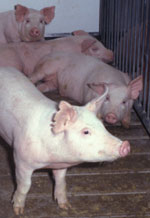
Agricultural intensification has led to an explosion of new infectious diseases. These diseases threaten human wellbeing, even if they are not zoonotic. For example, porcine reproductive and respiratory syndrome virus is the world's most economically damaging pathogen of domestic pigs and threatens global food security. We study how evolving viruses like PRRSV transmit in demographically well characterized domestic animal populations, and how their rapid evolution helps them evade host immunity and resist our best efforts to control them. Viruses of domestic animals are useful model systems for understanding the epidemiology‚ ecology‚ and evolution of emerging pathogens in general. They also illustrates how the domestication of animals – a milestone in human evolution – carried with it costs as well as benefits.
